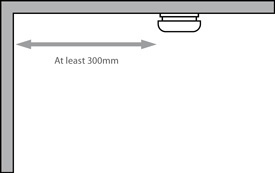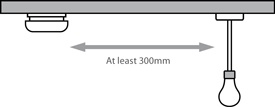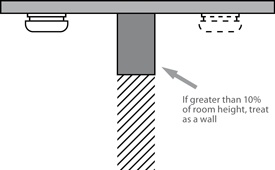Fastlec uses cookies to ensure that we give you the best experience on our website. If you continue we assume that you consent to receive all cookies on the Fastlec website. Read More.
Blog
All of the latest news and insights into the electrical world, from Fastlec.
Siting of Smoke Alarms
After the type of detector selection, the most important consideration becomes siting which should be carefully considered at the planning stage. Incorrectly sited alarms can lead to nuisance alarms which are inconvenient at best and deadly at worst - clearly not desirable. Such a situation can result in either the householder disabling the alarm, so it won't operate at all or potentially ignoring the alarm when a fire occurs.

Mount Centrally on the ceiling - Keep at least 300mm (12") from the wall

Keep at least 300mm (12") from light fittings

There must be an alarm within 3m (10ft) of all bedroom doors

On peaked ceilings, mount 900mm (36") horizontally from the peak.

Keep at least twice the depth away from any small obstructions such as beams

Any obstruction greater than 10% of the room height should be treated as a wall. Extra alarms may be needed.
Ceiling or Wall Mounting?
While it is permissible to mount smoke alarms on a wall the ceiling should always be the first choice. This is because warm smoke from a flame will always rise, therefore, ceiling alarms are best suited to detect a hazard earlier. Whether, for architectural, appearance, or any other reason, wall mounting is your choice, please take careful note of safety recommendations contained within your alarm installation instructions.
Useful Information
Do not site within 3m of a steam source e.g. kitchen/bathroom or garage or any location where the free flow of smoke to the alarm could be interrupted (e.g. next/above a door/air vent/heater/air-con unit)
Do not site within 1m of dimmer control cabling or wire alarm into any such cabling
Do not site smoke alarms adjacent to any heat source
Do not site within 300mm from any wall
Do not site near fluorescent lights; electronic noise may cause nuisance alarm
Do not site in locations where the temperature may fall below 5°C (41°F) or above 40°C (104°F), such as garages and unfinished attics.
Do not site in very dusty/dirty/insect-laden areas.
Do not site in areas where routine maintenance or operating hush/test button would prove difficult (e.g. top of stairwells).
Siting should be in accordance with the current Building Regulations and/or BS5839 Pt6/current I.E.E. Regulations


